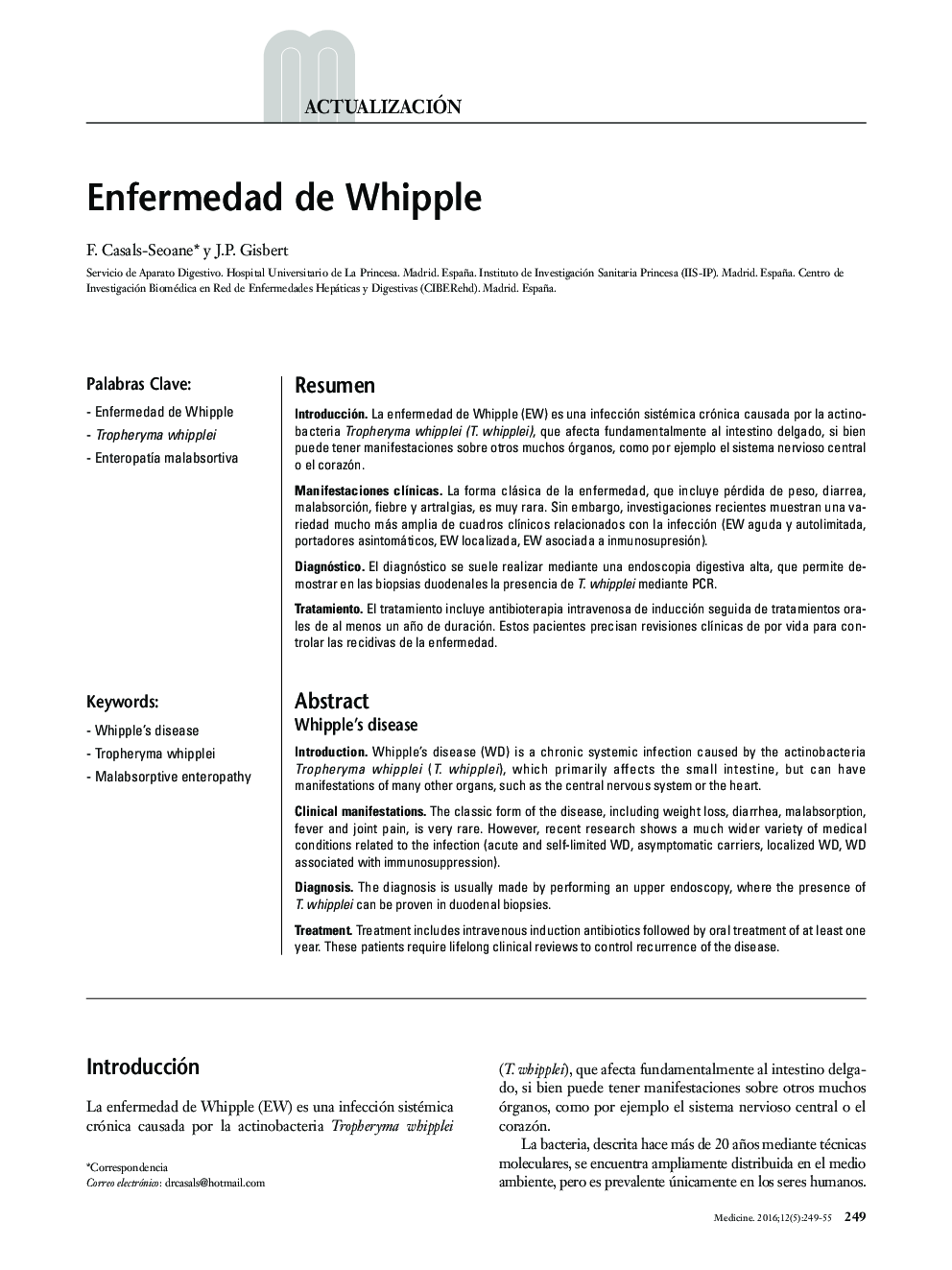| Article ID | Journal | Published Year | Pages | File Type |
|---|---|---|---|---|
| 3806292 | Medicine - Programa de Formación Médica Continuada Acreditado | 2016 | 7 Pages |
ResumenIntroducciónLa enfermedad de Whipple (EW) es una infección sistémica crónica causada por la actinobacteria Tropheryma whipplei (T. whipplei), que afecta fundamentalmente al intestino delgado, si bien puede tener manifestaciones sobre otros muchos órganos, como por ejemplo el sistema nervioso central o el corazón.Manifestaciones clínicasLa forma clásica de la enfermedad, que incluye pérdida de peso, diarrea, malabsorción, fiebre y artralgias, es muy rara. Sin embargo, investigaciones recientes muestran una variedad mucho más amplia de cuadros clínicos relacionados con la infección (EW aguda y autolimitada, portadores asintomáticos, EW localizada, EW asociada a inmunosupresión).DiagnósticoEl diagnóstico se suele realizar mediante una endoscopia digestiva alta, que permite demostrar en las biopsias duodenales la presencia de T. whipplei mediante PCR.TratamientoEl tratamiento incluye antibioterapia intravenosa de inducción seguida de tratamientos orales de al menos un año de duración. Estos pacientes precisan revisiones clínicas de por vida para controlar las recidivas de la enfermedad.
IntroductionWhipple's disease (WD) is a chronic systemic infection caused by the actinobacteria Tropheryma whipplei (T. whipplei), which primarily affects the small intestine, but can have manifestations of many other organs, such as the central nervous system or the heart.Clinical manifestationsThe classic form of the disease, including weight loss, diarrhea, malabsorption, fever and joint pain, is very rare. However, recent research shows a much wider variety of medical conditions related to the infection (acute and self-limited WD, asymptomatic carriers, localized WD, WD associated with immunosuppression).DiagnosisThe diagnosis is usually made by performing an upper endoscopy, where the presence of T. whipplei can be proven in duodenal biopsies.TreatmentTreatment includes intravenous induction antibiotics followed by oral treatment of at least one year. These patients require lifelong clinical reviews to control recurrence of the disease.
